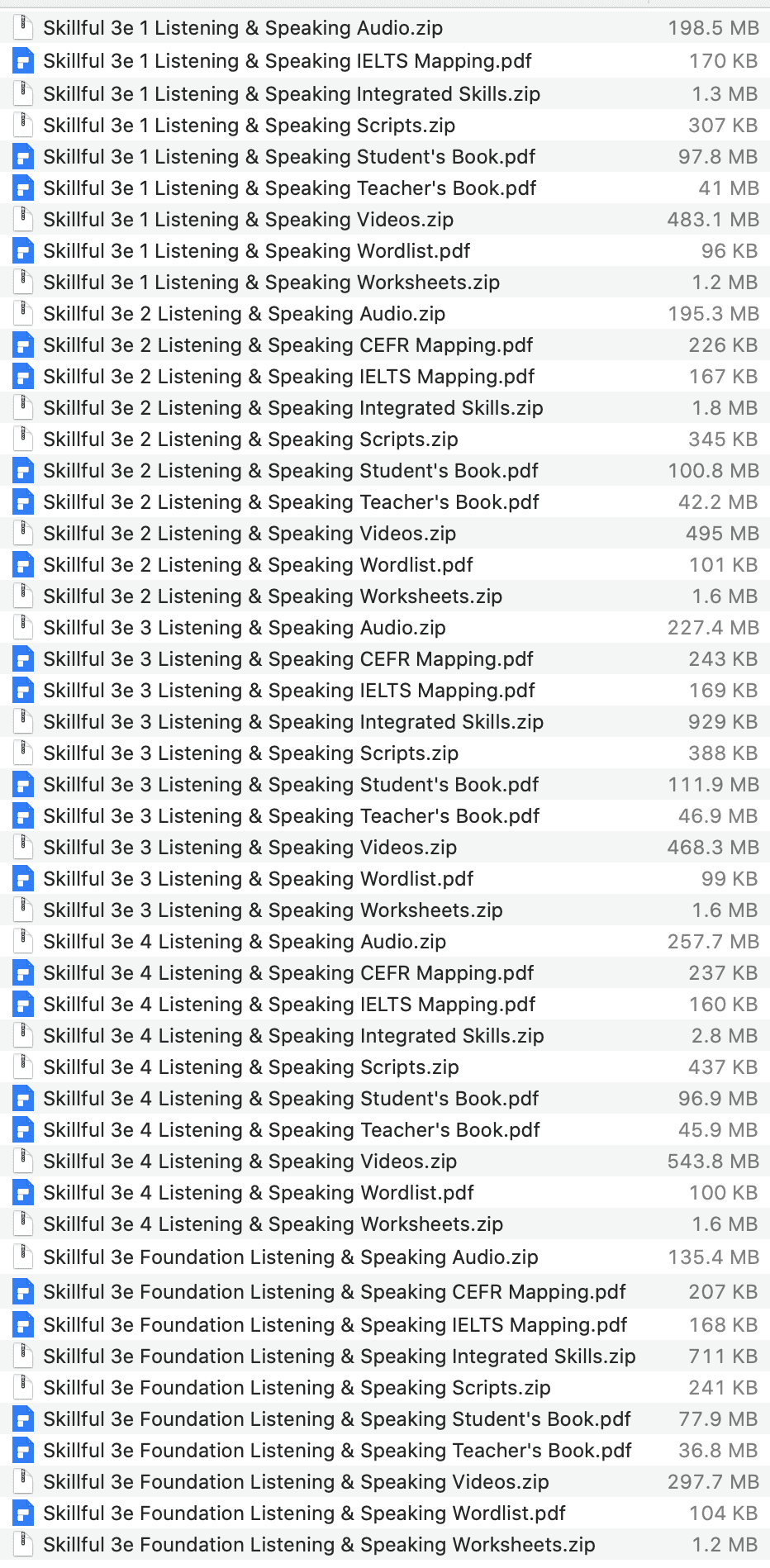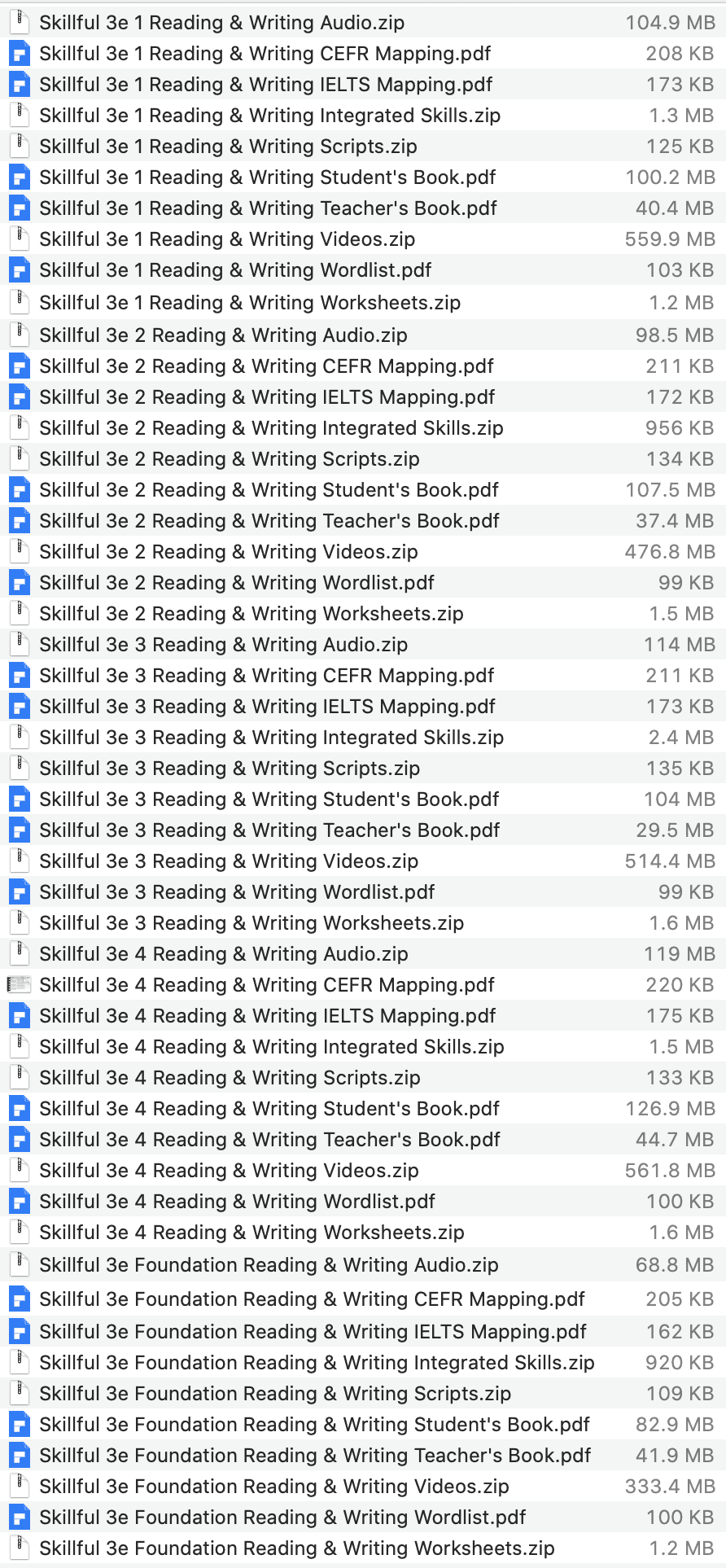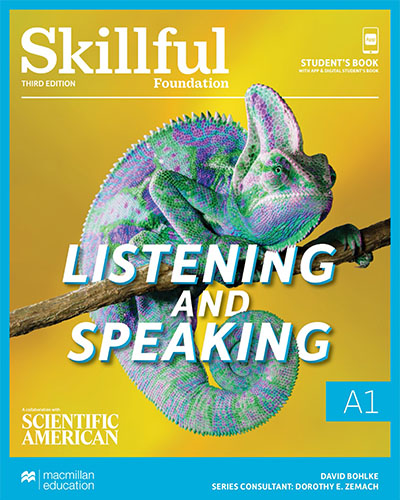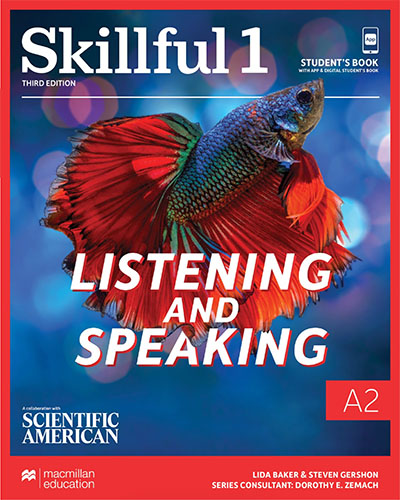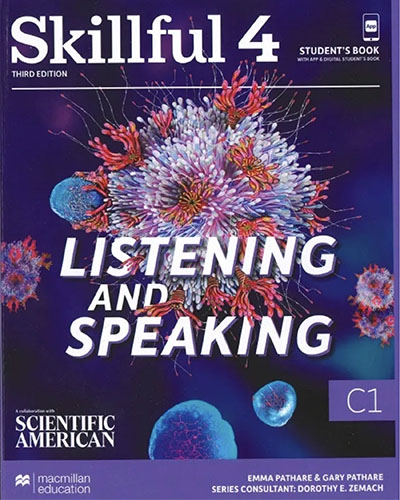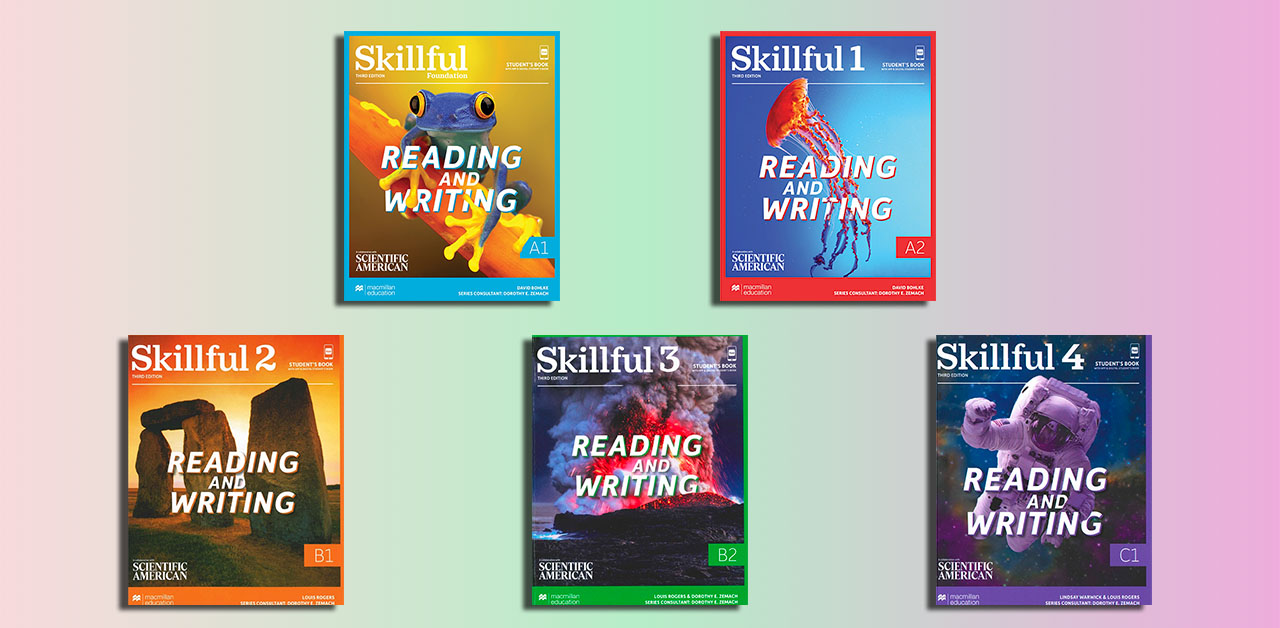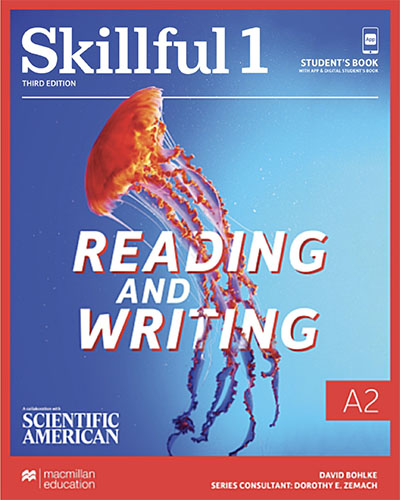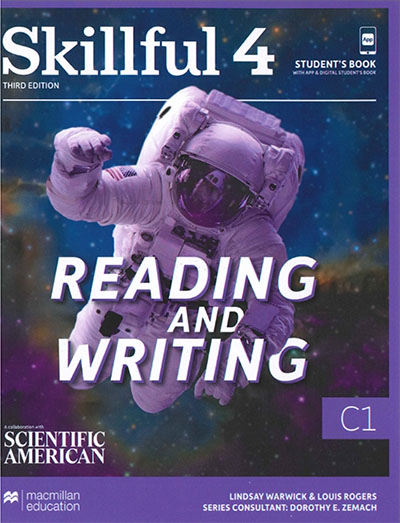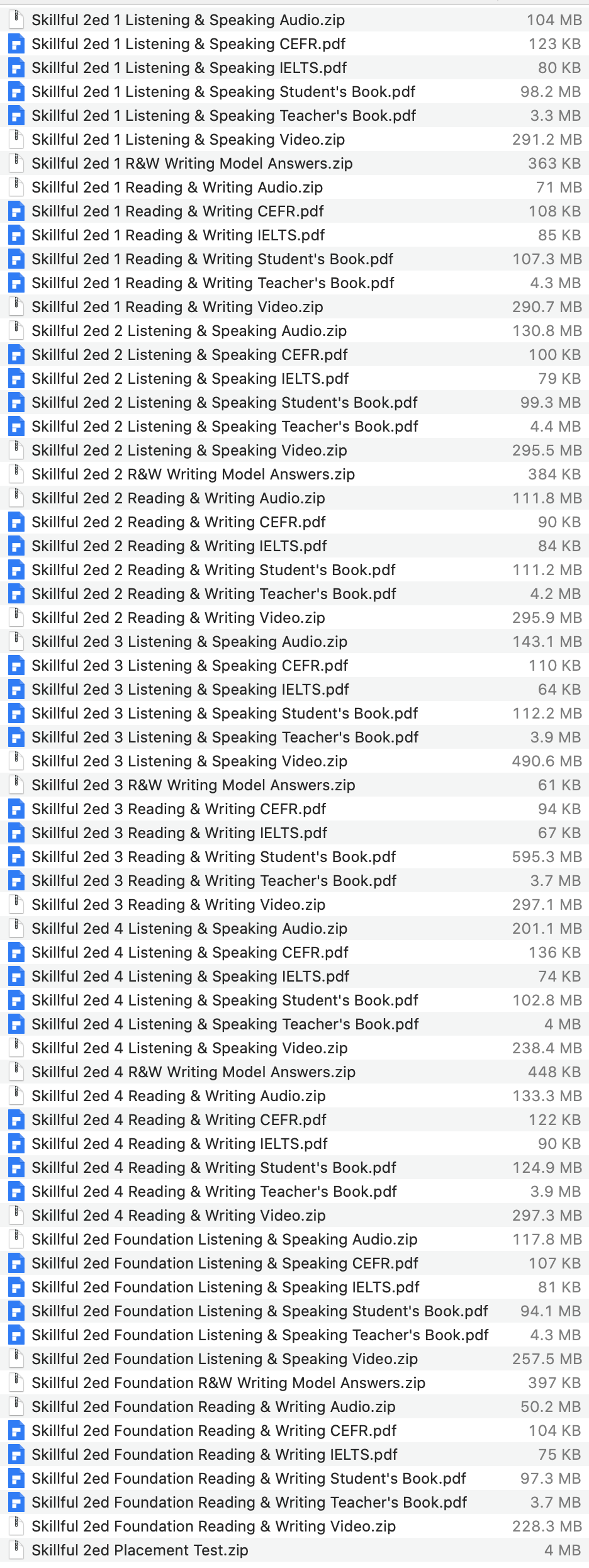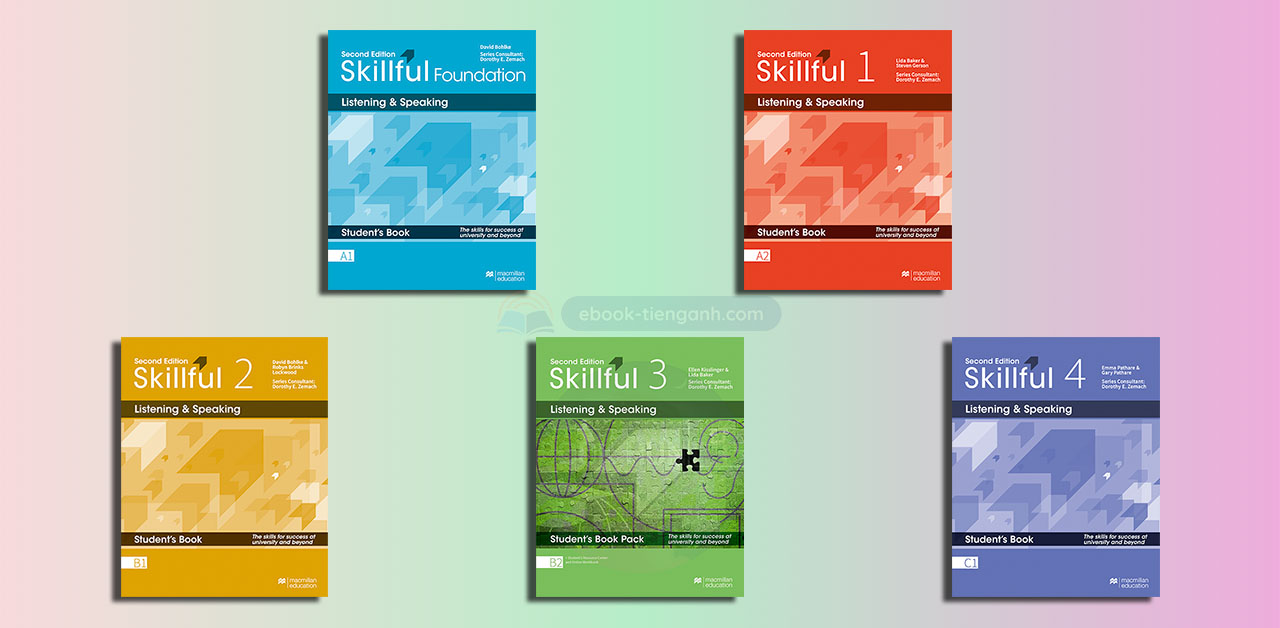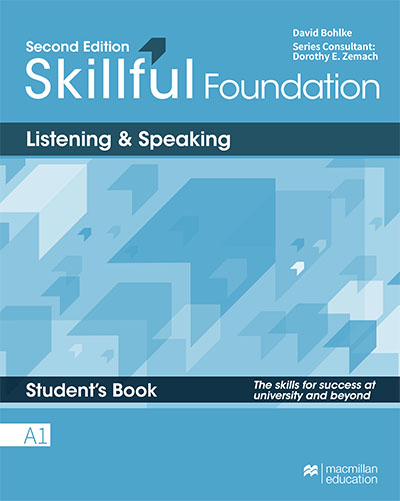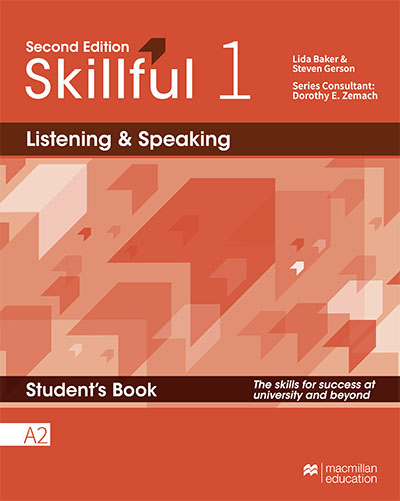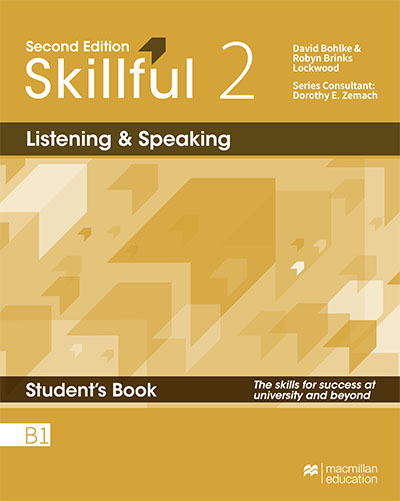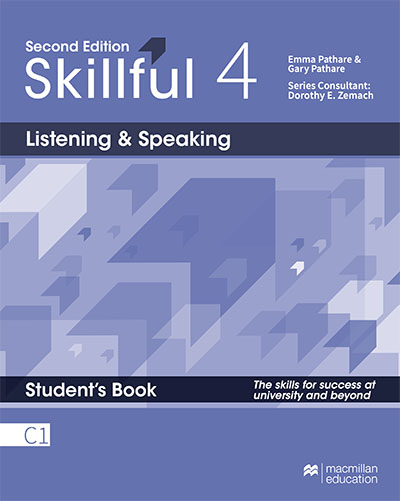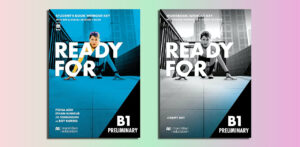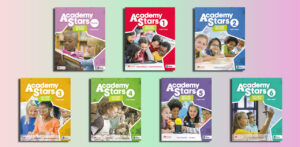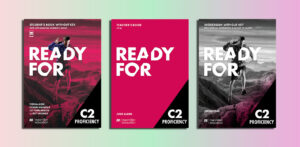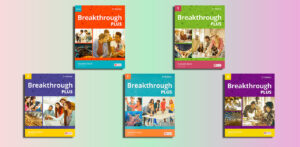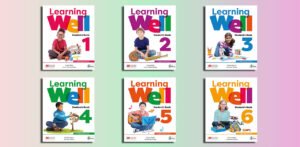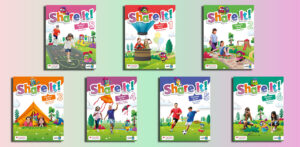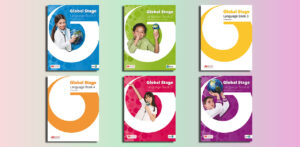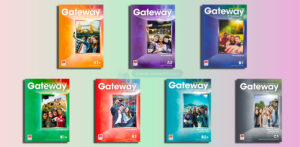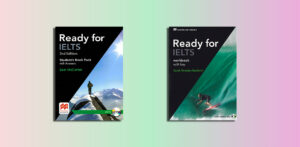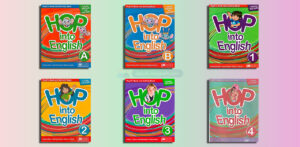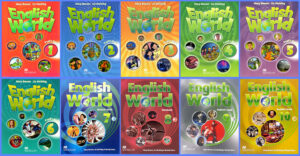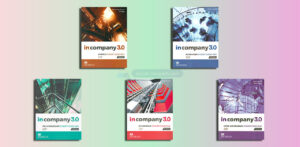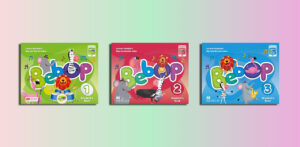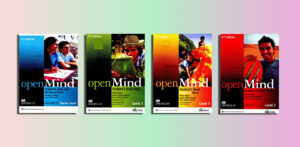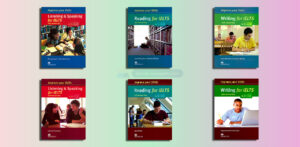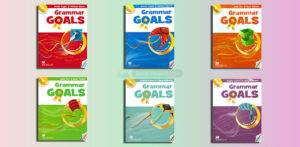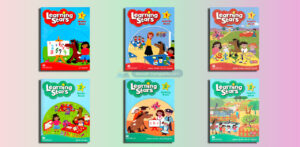Skillful Third Edition (PDFs, Resources)
Skillful Third Edition Listening and Speaking
Level 1
Skillful 3e 1 Listening & Speaking Student’s Book.pdf – Sample: Click
IELTS Mapping – Teacher’s Book – Wordlist – Audio – Integrated Skills – Scripts – Videos – Worksheets
Level 2
Skillful 3e 2 Listening & Speaking Student’s Book.pdf – Sample: Click
CEFR Mapping – IELTS Mapping – Teacher’s Book – Wordlist – Audio – Integrated Skills – Scripts – Videos – Worksheets
Level 3
Skillful 3e 3 Listening & Speaking Student’s Book.pdf – Sample: Click
CEFR Mapping – IELTS Mapping – Teacher’s Book – Wordlist – Audio – Integrated Skills – Scripts – Videos – Worksheets
Level 4
Skillful 3e 4 Listening & Speaking Student’s Book.pdf – Sample: Click
CEFR Mapping – IELTS Mapping – Teacher’s Book – Wordlist – Audio – Integrated Skills – Scripts – Videos – Worksheets
Foundation Level
Skillful 3e Foundation Listening & Speaking Student’s Book.pdf – Sample: Click
CEFR Mapping – IELTS Mapping – Teacher’s Book – Wordlist – Audio – Integrated Skills – Scripts – Videos – Worksheets
Skillful Third Edition Reading and Writing
Level 1
Skillful 3e 1 Reading & Writing Student’s Book.pdf – Sample: Click
CEFR Mapping – IELTS Mapping – Teacher’s Book – Wordlist – Audio – Integrated Skills – Scripts – Videos – Worksheets
Level 2
Skillful 3e 2 Reading & Writing Student’s Book.pdf – Sample: Click
CEFR Mapping – IELTS Mapping – Teacher’s Book – Wordlist – Audio – Integrated Skills – Scripts – Videos – Worksheets
Level 3
Skillful 3e 3 Reading & Writing Student’s Book.pdf – Sample: Click
CEFR Mapping – IELTS Mapping – Teacher’s Book – Wordlist – Audio – Integrated Skills – Scripts – Videos – Worksheets
Level 4
Skillful 3e 4 Reading & Writing Student’s Book.pdf – Sample: Click
CEFR Mapping – IELTS Mapping – Teacher’s Book – Wordlist – Audio – Integrated Skills – Scripts – Videos – Worksheets
Foundation Level
Skillful 3e Foundation Reading & Writing Student’s Book.pdf – Sample: Click
CEFR Mapping – IELTS Mapping – Teacher’s Book – Wordlist – Audio – Integrated Skills – Scripts – Videos – Worksheets

Skillful Second Edition (Pdf Resources)
Level 1
Skillful 2ed 1 Listening & Speaking Audio.zip
Skillful 2ed 1 Listening & Speaking CEFR.pdf
Skillful 2ed 1 Listening & Speaking IELTS.pdf
Skillful 2ed 1 Listening & Speaking Student’s Book.pdf – Sample: Click
Skillful 2ed 1 Listening & Speaking Teacher’s Book.pdf
Skillful 2ed 1 Listening & Speaking Video.zip
Skillful 2ed 1 R&W Writing Model Answers.zip
Skillful 2ed 1 Reading & Writing Audio.zip
Skillful 2ed 1 Reading & Writing CEFR.pdf
Skillful 2ed 1 Reading & Writing IELTS.pdf
Skillful 2ed 1 Reading & Writing Student’s Book.pdf – Sample: Click
Skillful 2ed 1 Reading & Writing Teacher’s Book.pdf
Skillful 2ed 1 Reading & Writing Video.zip
Level 2
Skillful 2ed 2 Listening & Speaking Audio.zip
Skillful 2ed 2 Listening & Speaking CEFR.pdf
Skillful 2ed 2 Listening & Speaking IELTS.pdf
Skillful 2ed 2 Listening & Speaking Student’s Book.pdf – Sample: Click
Skillful 2ed 2 Listening & Speaking Teacher’s Book.pdf
Skillful 2ed 2 Listening & Speaking Video.zip
Skillful 2ed 2 R&W Writing Model Answers.zip
Skillful 2ed 2 Reading & Writing Audio.zip
Skillful 2ed 2 Reading & Writing CEFR.pdf
Skillful 2ed 2 Reading & Writing IELTS.pdf
Skillful 2ed 2 Reading & Writing Student’s Book.pdf – Sample: Click
Skillful 2ed 2 Reading & Writing Teacher’s Book.pdf
Skillful 2ed 2 Reading & Writing Video.zip
Level 3
Skillful 2ed 3 Listening & Speaking Audio.zip
Skillful 2ed 3 Listening & Speaking CEFR.pdf
Skillful 2ed 3 Listening & Speaking IELTS.pdf
Skillful 2ed 3 Listening & Speaking Student’s Book.pdf – Sample: Click
Skillful 2ed 3 Listening & Speaking Teacher’s Book.pdf
Skillful 2ed 3 Listening & Speaking Video.zip
Skillful 2ed 3 R&W Writing Model Answers.zip
Skillful 2ed 3 Reading & Writing CEFR.pdf
Skillful 2ed 3 Reading & Writing IELTS.pdf
Skillful 2ed 3 Reading & Writing Student’s Book.pdf – Sample: Click
Skillful 2ed 3 Reading & Writing Teacher’s Book.pdf
Skillful 2ed 3 Reading & Writing Video.zip
Level 4
Skillful 2ed 4 Listening & Speaking Audio.zip
Skillful 2ed 4 Listening & Speaking CEFR.pdf
Skillful 2ed 4 Listening & Speaking IELTS.pdf
Skillful 2ed 4 Listening & Speaking Student’s Book.pdf – Sample: Click
Skillful 2ed 4 Listening & Speaking Teacher’s Book.pdf
Skillful 2ed 4 Listening & Speaking Video.zip
Skillful 2ed 4 R&W Writing Model Answers.zip
Skillful 2ed 4 Reading & Writing Audio.zip
Skillful 2ed 4 Reading & Writing CEFR.pdf
Skillful 2ed 4 Reading & Writing IELTS.pdf
Skillful 2ed 4 Reading & Writing Student’s Book.pdf – Sample: Click
Skillful 2ed 4 Reading & Writing Teacher’s Book.pdf
Skillful 2ed 4 Reading & Writing Video.zip
Foundation Level
Skillful 2ed Foundation Listening & Speaking Audio.zip
Skillful 2ed Foundation Listening & Speaking CEFR.pdf
Skillful 2ed Foundation Listening & Speaking IELTS.pdf
Skillful 2ed Foundation Listening & Speaking Student’s Book.pdf – Sample: Click
Skillful 2ed Foundation Listening & Speaking Teacher’s Book.pdf
Skillful 2ed Foundation Listening & Speaking Video.zip
Skillful 2ed Foundation R&W Writing Model Answers.zip
Skillful 2ed Foundation Reading & Writing Audio.zip
Skillful 2ed Foundation Reading & Writing CEFR.pdf
Skillful 2ed Foundation Reading & Writing IELTS.pdf
Skillful 2ed Foundation Reading & Writing Student’s Book.pdf – Sample: Click
Skillful 2ed Foundation Reading & Writing Teacher’s Book.pdf
Skillful 2ed Foundation Reading & Writing Video.zip
Skillful 2ed Placement Test.zip
✅ Get Skillful 2nd Edition (Pdf, Resources): $8 for one level; $30 for all 5 levels
๏ Other payment methods: Click here
Overview of the “Skillful Third Edition”
Contents
- 1 Overview of the “Skillful Third Edition”
- 2 Who is suitable for “Skillful Third Edition”?
- 3 The benefits of “Skillful Third Edition”
- 4 Effective learning strategies for “Skillful Third Edition”
- 5 Effective teaching strategies for “Skillful Third Edition”
- 6 Advanced English Learning Series: Top Educational Resources to Enhance Academic Skills and Critical Thinking for Students
| ✅ Coursebook: | Skillful Third Edition |
| ✅ Publisher: | Macmillan Education |
| ✅ 5 Levels: | A1, A2, B1, B2, C1 |
| ✅ English type: | American English |
| ✅ For: | Higher Education, Academic |
| ✅ Publication year: | 2024 |
“Skillful Third Edition” by Macmillan Education is a five-level (A1-C1) academic English course designed specifically for students in university English programs or those preparing for higher education. With a strong focus on developing both language proficiency and essential academic skills, this edition aims to equip learners with the tools, confidence, and abilities needed to excel in their studies and future careers. It builds on the success of previous editions by incorporating updated content, a step-by-step teaching approach, and innovative digital resources tailored to modern educational needs.
Key Features
Academic Focus and Step-by-Step Approach:
- The course emphasizes a structured progression that enhances language retention and academic proficiency. It integrates reading, writing, listening, and speaking skills with a clear focus on preparing students for the demands of university-level coursework.
Authentic Content from Scientific American:
- A standout feature is the inclusion of content sourced from Scientific American, a renowned scientific journal. This provides students with engaging, science-based topics through articles, infographics, podcasts, and other multi-modal inputs, mirroring the diverse formats they will encounter in higher education.
Integrated Skills Sections:
- New sections at the end of chapters (or every two chapters) focus on integrated skills development. These sections use authentic, multimodal resources to foster critical thinking, analysis, and practical application of language skills in academic contexts.
Flexible Dual Skills Approach:
- The course is split into two complementary strands—Reading & Writing and Listening & Speaking—which follow a shared topic syllabus. These can be used together for a comprehensive English skills program or independently to supplement existing English Language Teaching (ELT) curricula.
Innovative Digital Platform:
- Student Resources: The blended learning solution includes a Student’s Book, Digital Student’s Book, and an App with on-the-go revision tools for academic vocabulary and idioms. These interactive components enhance engagement and retention.
- Teacher Resources: The Digital Teacher’s Edition offers a Teacher’s eBook for on-screen lesson planning, a Classroom Presentation Kit, an Assessment Tool with automatic grading, and a Teacher’s Resource Centre. These tools support both in-person and online/blended teaching scenarios, allowing educators to track student progress efficiently.
Adaptability for Remote Learning:
- Designed with flexibility in mind, “Skillful Third Edition” has been enhanced with digital components to support remote or hybrid teaching environments, making it adaptable to various instructional contexts.
Structure and Levels
- Levels: The series spans Foundation (A1) to Level 4 (C1), catering to learners from beginner to advanced proficiency.
- Components: Each level includes a Student’s Book, Digital Student’s Book, App, and corresponding Teacher’s editions (both print and digital). The course is supported by additional resources like sample units and scope-and-sequence documents available for download.
Purpose and Audience
- “Skillful Third Edition” targets students aspiring to succeed in university English programs, particularly those needing to bridge the gap between general English proficiency and academic language requirements. Its rigorous methodology and real-world content make it ideal for learners aiming to develop critical thinking, express ideas confidently, and transition smoothly into higher education settings.
In summary, “Skillful Third Edition” combines a robust academic framework, authentic materials, and cutting-edge digital tools to deliver a comprehensive, flexible, and engaging learning experience for university-bound English learners.
Skillful 3e 1 Listening & Speaking Student’s Book
Who is suitable for “Skillful Third Edition”?
“Skillful Third Edition” by Macmillan Education is designed for a specific audience of English language learners who are preparing for or currently engaged in academic pursuits, particularly at the university level. Here’s a detailed breakdown of who is suitable for this course:
Primary Audience
University-Bound Students:
- Learners planning to attend English-medium universities or colleges, either in their home country or abroad, who need to develop academic English skills to succeed in higher education.
- Students preparing for programs where English is the language of instruction, requiring proficiency in reading academic texts, writing essays, listening to lectures, and participating in discussions.
Current University Students:
- Undergraduate or postgraduate students enrolled in English-language programs who seek to improve their academic language skills to keep up with coursework, research, and presentations.
- Particularly suited for those in science-related fields due to the integration of Scientific American content, though the skills taught are broadly applicable across disciplines.
Pre-University Learners:
- High school or foundation-year students transitioning to tertiary education who need to build a strong foundation in academic English before entering university.
- Those enrolled in preparatory courses (e.g., EAP – English for Academic Purposes) looking to bridge the gap between general English and academic proficiency.
Skillful 3e 2 Listening & Speaking Student’s Book
Language Proficiency Levels
A1 to C1 Learners:
The course spans five levels (Foundation to Level 4), corresponding to the Common European Framework of Reference (CEFR) levels A1 (beginner) to C1 (advanced). It is suitable for:
- Beginners (A1): Students with minimal English skills starting their academic English journey.
- Intermediate Learners (A2-B2): Those with some English proficiency who need to refine their skills for academic contexts.
- Advanced Learners (B1+-C1): Students nearing fluency who want to master complex academic language and critical thinking skills.
Specific Needs and Goals
Students Needing Academic Skills:
- Ideal for learners who require structured training in reading academic texts, writing essays or reports, listening to lectures or podcasts, and speaking in seminars or presentations.
Critical Thinkers:
- Suitable for individuals who want to develop analytical and evaluative skills alongside language proficiency, as the course emphasizes critical thinking through authentic, thought-provoking content.
Self-Directed Learners:
- The digital tools (e.g., Student App, Digital Student’s Book) make it appropriate for motivated learners who prefer flexible, independent study options alongside or outside of classroom settings.
Skillful 3e 3 Listening & Speaking Student’s Book
Educational Contexts
Formal Education:
- Perfect for students in institutions offering English language programs, such as Intensive English Programs (IEPs), university language centers, or pre-sessional courses.
Blended or Remote Learning:
- Learners in online or hybrid environments benefit from the course’s robust digital platform, which supports both teacher-led instruction and self-paced study.
Supplementary Learning:
- Suitable for students already using other ELT materials but needing additional focus on academic English skills, as the Reading & Writing and Listening & Speaking strands can be used independently.
Other Suitable Groups
Young Adults and Adults:
- While primarily aimed at late teens to young adults (e.g., 16-25 years old) preparing for higher education, it can also suit older learners pursuing academic or professional development in English-speaking contexts.
Test Preparation Candidates:
- Students preparing for standardized tests like IELTS, TOEFL, or Cambridge exams may find it valuable, as the academic skills align with test requirements (though it’s not explicitly a test-prep course).
Who It’s Not Suitable For
- Young Learners: The academic focus and complexity of content make it less appropriate for children or early teens (e.g., below 14-16 years old).
- General English Learners: Those seeking conversational fluency for daily life or non-academic purposes may find the course too specialized.
- Professionals Without Academic Goals: While useful for some career contexts, it’s less tailored to professionals focused solely on workplace English without an academic component.
Summary
- “Skillful Third Edition” is most suitable for ambitious learners aged 16 and up, ranging from beginner (A1) to advanced (C1) levels, who are preparing for or engaged in university-level studies. It’s an excellent fit for students needing to master academic English, critical thinking, and integrated skills in a structured, flexible format—whether in a classroom, online, or through self-study.
Skillful 3e 4 Listening & Speaking Student’s Book
The benefits of “Skillful Third Edition”
“Skillful Third Edition” by Macmillan Education offers a range of benefits tailored to the needs of academic English learners, particularly those preparing for or engaged in university-level studies. Below is an overview of its key advantages for students, educators, and institutions:
Benefits for Students
Comprehensive Academic Skill Development:
- Integrates reading, writing, listening, and speaking skills with a clear focus on academic contexts, helping students excel in tasks like essay writing, lecture comprehension, and seminar discussions.
- New integrated skills sections encourage practical application and critical thinking, mirroring real-world university challenges.
Authentic and Engaging Content:
- Features materials from Scientific American, exposing students to high-quality, science-based texts, podcasts, and infographics. This not only builds language skills but also broadens knowledge and stimulates intellectual curiosity.
- Multimodal inputs prepare students for the diverse formats they’ll encounter in higher education.
Structured Progression:
- A step-by-step approach ensures steady improvement, making complex academic skills accessible even to beginners (A1) while challenging advanced learners (up to C1).
- Builds confidence by breaking down skills into manageable stages, enhancing retention and mastery.
Flexibility Across Levels and Needs:
- Spans five levels (A1-C1), catering to learners at different proficiency stages, from foundational to advanced academic English.
- The dual-strand structure (Reading & Writing and Listening & Speaking) allows students to focus on specific skills or combine them for a holistic experience.
Enhanced Digital Learning Tools:
- The Digital Student’s Book and App provide interactive, on-the-go access to lessons, vocabulary exercises, and revision tools, supporting self-directed study and flexibility.
- Ideal for busy students balancing coursework and independent learning, with resources available anytime, anywhere.
Preparation for University Success:
- Equips students with the language and critical thinking skills needed to thrive in English-medium academic environments, easing the transition to higher education.
- Develops transferable skills like analysis, evaluation, and effective communication, valuable beyond academia.
Motivation Through Relevance:
- Topics and tasks are designed to reflect real academic and professional scenarios, keeping students engaged and motivated by showing the practical value of their learning.
Skillful 3e Foundation Listening & Speaking Student’s Book
Benefits for Educators
Robust Teaching Support:
- The Digital Teacher’s Edition and Classroom Presentation Kit streamline lesson planning and delivery, with on-screen tools for both in-person and online teaching.
- The Assessment Tool with automatic grading saves time and provides detailed insights into student progress, enabling data-driven instruction.
Adaptability to Teaching Contexts:
- Supports blended, hybrid, or fully remote learning environments, making it versatile for modern educational demands.
- Teachers can use the Reading & Writing and Listening & Speaking strands together or separately, tailoring the course to their curriculum or students’ needs.
Engaging and Authentic Materials:
- High-quality content from Scientific American keeps lessons dynamic and credible, reducing the need for supplemental resources and enhancing classroom discussions.
- Integrated skills sections provide ready-made activities to foster critical thinking and collaboration.
Time-Saving Resources:
- The Teacher’s Resource Centre offers downloadable materials, sample units, and scope-and-sequence guides, simplifying preparation and ensuring alignment with learning objectives.
Progress Tracking:
- Digital tools allow teachers to monitor individual and class performance efficiently, helping them identify areas for improvement and adjust instruction accordingly.
Skillful 3e 1 Reading & Writing Student’s Book
Benefits for Institutions
Alignment with Academic Goals:
- Designed specifically for university English programs, it meets the needs of institutions preparing students for higher education or offering EAP (English for Academic Purposes) courses.
- Enhances institutional reputation by providing a rigorous, research-backed curriculum.
Scalability and Flexibility:
- Suitable for large-scale programs or smaller cohorts, with digital components enabling consistent delivery across multiple classrooms or campuses.
- Supports diverse teaching modalities (in-person, online, hybrid), accommodating institutional preferences and infrastructure.
Cost-Effective Solution:
- Combines comprehensive skill-building with digital resources in one package, reducing the need for multiple supplementary materials or platforms.
- Long-term value through its five-level progression, serving students from beginner to advanced stages.
Student Success and Retention:
- By equipping students with the skills to succeed academically, it can improve pass rates, satisfaction, and retention in university-prep or degree programs.
Skillful 3e 2 Reading & Writing Student’s Book
Broader Benefits
Global Relevance:
- Prepares students for English-medium education worldwide, aligning with international academic standards and supporting global mobility.
Future-Ready Skills:
- Beyond language, it fosters critical thinking, digital literacy, and independent learning—skills essential for 21st-century careers and lifelong education.
Inclusivity Across Levels:
- Caters to a wide range of learners (A1-C1), ensuring accessibility for diverse student populations, from beginners to near-native speakers.
Summary
- “Skillful Third Edition” benefits students by building academic English proficiency, confidence, and critical thinking through engaging, authentic content and flexible digital tools. For educators, it offers practical resources, adaptability, and progress-tracking capabilities, while institutions gain a scalable, high-quality program that enhances student outcomes. Collectively, it bridges the gap between language learning and academic success, making it a valuable asset for university-bound learners and the educational ecosystems supporting them.
Skillful 3e 3 Reading & Writing Student’s Book
Effective learning strategies for “Skillful Third Edition”
To maximize the benefits of “Skillful Third Edition” by Macmillan Education, learners can adopt effective strategies tailored to its academic focus, structured progression, and digital resources. These strategies align with the course’s emphasis on integrated skills, critical thinking, and university preparation. Below are practical and proven approaches for students, supplemented by tips for educators to enhance the learning experience.
Effective Learning Strategies for Students
1. Leverage the Step-by-Step Structure
- Break Down Tasks: Approach each unit systematically, mastering one skill (e.g., reading comprehension) before moving to the next (e.g., writing a response). The course’s gradual progression supports this method.
- Review Regularly: Revisit earlier lessons or exercises to reinforce foundational skills, ensuring retention as complexity increases across levels (A1-C1).
2. Engage Actively with Authentic Content
- Annotate Scientific American Materials: Highlight key ideas, vocabulary, and arguments in articles or infographics. Summarize them in your own words to boost comprehension and retention.
- Connect to Personal Interests: Relate topics to your academic field or goals (e.g., science, humanities) to stay motivated and deepen understanding.
3. Practice Integrated Skills
- Simulate Academic Scenarios: Use the integrated skills sections to practice real-world tasks, like listening to a podcast and writing a short essay or discussing it with peers.
- Combine Strands: Pair Reading & Writing with Listening & Speaking activities (e.g., read a text, then debate its ideas) to mimic university assignments.
4. Utilize Digital Tools Effectively
- Use the App for Vocabulary: Regularly practice academic vocabulary and idioms via the Student App during downtime (e.g., commuting). Create flashcards or quizzes for repetition.
- Interact with the Digital Student’s Book: Complete interactive exercises, watch embedded videos, and track your progress to identify weak areas for improvement.
5. Develop Critical Thinking
- Question the Material: Ask “why” and “how” while engaging with texts or discussions (e.g., Why does this argument matter? How does this data support the claim?).
- Analyze and Evaluate: Practice evaluating evidence or perspectives presented in Scientific American content, preparing for university-level analysis.
6. Build Speaking and Listening Confidence
- Record Yourself: Use the Listening & Speaking strand to record responses to prompts, then review for fluency, pronunciation, and clarity.
- Engage in Peer Practice: Form study groups to discuss unit topics or role-play academic scenarios (e.g., presenting a summary), leveraging the course’s speaking tasks.
7. Set Goals and Track Progress
- Define Objectives: Set specific, measurable goals for each unit (e.g., “Learn 10 new academic words” or “Write a 200-word summary without errors”).
- Self-Assess: Use the course’s exercises and digital feedback to monitor improvement, adjusting your focus as needed (e.g., more listening practice if scores are low).
8. Manage Time Effectively
- Schedule Study Sessions: Dedicate consistent time slots (e.g., 30-60 minutes daily) to work through units, balancing the course with other commitments.
- Prioritize Weaknesses: Spend extra time on challenging skills (e.g., listening to lectures) using the flexible digital resources.
9. Seek Feedback
- Ask for Input: Share written work or speaking recordings with teachers or peers for constructive feedback, aligning with the course’s academic focus.
- Reflect on Mistakes: Use errors as learning opportunities, revisiting relevant sections to address gaps.
Skillful 3e 4 Reading & Writing Student’s Book
Tips for Educators to Enhance Student Learning
1. Scaffold Learning
- Start Small: Introduce foundational skills (e.g., skimming texts) before advancing to complex tasks (e.g., synthesizing multiple sources), following the course’s structured approach.
- Provide Examples: Model academic tasks (e.g., a sample essay or presentation) using Skillful content to clarify expectations.
2. Encourage Active Participation
- Facilitate Discussions: Use the Scientific American materials as prompts for debates or group analysis, fostering critical thinking and speaking practice.
- Incorporate Pair Work: Assign collaborative tasks from the integrated skills sections to build peer interaction and confidence.
3. Maximize Digital Resources
- Integrate the Classroom Presentation Kit: Use its interactive features during lessons to highlight key points, play audio, or display visuals, keeping students engaged.
- Assign App Exercises: Supplement lessons with App-based vocabulary or revision tasks as homework, reinforcing classroom learning.
4. Personalize Instruction
- Tailor Activities: Adapt tasks to students’ academic goals (e.g., science-focused reading for STEM learners) while maintaining the course’s core structure.
- Use Assessment Tools: Leverage the automatic grading and progress-tracking features to identify individual needs and provide targeted support.
5. Promote Reflective Learning
- Encourage Journals: Have students reflect on what they’ve learned after each unit (e.g., “What skill improved most?”), linking it to their university aspirations.
- Review Goals: Periodically discuss progress with students, using Skillful’s digital feedback to adjust learning plans.
6. Simulate Real-World Contexts
- Assign Projects: Create assignments that mirror university tasks (e.g., a research summary or oral presentation) using the course’s authentic content.
- Blend Skills: Combine strands in lessons (e.g., listen to a podcast, then write a response), preparing students for integrated academic demands.
Combined Approach for Optimal Results
- Students: Actively engage with the course’s authentic materials, practice consistently using digital tools, and seek feedback to refine skills.
- Educators: Guide students through scaffolding, interactive lessons, and personalized support, leveraging the course’s resources to create a dynamic learning environment.
Example Weekly Study Plan
- Monday: Read a Scientific American article (Reading & Writing), annotate key points, and summarize it (20-30 minutes).
- Tuesday: Listen to a podcast (Listening & Speaking), take notes, and record a 2-minute response (20-30 minutes).
- Wednesday: Complete Digital Student’s Book exercises for the unit (30 minutes).
- Thursday: Practice vocabulary on the App and write a short essay (30-40 minutes).
- Friday: Discuss the week’s topic with a peer or teacher, focusing on speaking fluency (20-30 minutes).
- Weekend: Review weak areas and preview the next unit (30 minutes).
Why These Strategies Work
- Alignment with Design: The strategies capitalize on Skillful Third Edition’s structured progression, authentic content, and digital flexibility.
- Active Learning: They encourage participation, reflection, and application, key to mastering academic English.
- Skill Integration: They mirror the course’s emphasis on combining skills, preparing students for university-level challenges.
By adopting these strategies, learners can fully harness the potential of “Skillful Third Edition,” building not just language proficiency but also the confidence and critical thinking needed for academic and professional success.
Skillful 3e Foundation Reading & Writing Student’s Book
Effective teaching strategies for “Skillful Third Edition”
Teaching “Skillful Third Edition” by Macmillan Education effectively requires strategies that align with its academic focus, integrated skills approach, authentic Scientific American content, and robust digital tools. These strategies are designed to engage students, foster critical thinking, and prepare them for university-level success while maximizing the course’s resources for educators. Below are practical and evidence-based teaching strategies tailored to this series.
Effective Teaching Strategies for “Skillful Third Edition”
1. Scaffold Learning for Progressive Mastery
- Break Down Skills: Introduce skills incrementally, following the course’s step-by-step structure. For example, start with skimming a Scientific American article (Reading & Writing) before teaching in-depth analysis or essay structuring.
- Model Tasks: Demonstrate how to complete key activities (e.g., summarizing a text or delivering a short presentation) using the course materials, providing a clear example for students to emulate.
- Gradual Release: Transition from guided practice (e.g., teacher-led note-taking during a podcast) to independent work (e.g., students summarizing it alone), building confidence across levels (A1-C1).
2. Leverage Authentic Content for Engagement
- Contextualize Lessons: Use Scientific American articles, podcasts, and infographics to connect lessons to real-world academic or scientific topics, sparking curiosity and relevance (e.g., discuss climate change data from a unit).
- Encourage Inquiry: Pose open-ended questions based on the content (e.g., “What are the implications of this research?”) to stimulate discussion and critical thinking.
- Incorporate Multimodal Inputs: Combine reading, listening, and visual elements (e.g., analyze an infographic after listening to a related podcast) to mirror university-style learning.
3. Integrate Skills Actively
- Blend Strands: Design lessons that combine Reading & Writing and Listening & Speaking (e.g., students read an article, then present a spoken summary), reflecting the integrated skills sections.
- Simulate Academic Tasks: Assign projects like writing a response to a podcast or debating a text’s argument, preparing students for university assignments.
- Cross-Skill Reinforcement: Use speaking to reinforce writing (e.g., discuss a draft aloud before revising) or listening to enhance reading (e.g., listen to a lecture, then read related material).
4. Maximize Digital Tools
- Use the Classroom Presentation Kit: Display interactive content (texts, audio, visuals) during lessons to maintain engagement and facilitate group activities, whether in-person or online.
- Assign Digital Exercises: Supplement classwork with tasks from the Digital Student’s Book or App (e.g., vocabulary drills or comprehension quizzes) for homework, using automatic feedback to monitor progress.
- Track Performance: Utilize the Assessment Tool to analyze student results, identifying trends (e.g., weak listening skills) and adjusting lesson focus accordingly.
5. Foster Critical Thinking and Discussion
- Socratic Questioning: Ask probing questions about Scientific American content (e.g., “Why is this evidence convincing?” or “What’s missing from this argument?”) to develop analytical skills.
- Group Debates: Assign roles based on unit topics (e.g., argue for or against a scientific claim), encouraging speaking practice and reasoned argumentation.
- Reflection Activities: After integrated skills tasks, have students reflect on their process (e.g., “What was challenging about synthesizing this information?”) to deepen learning.
6. Promote Collaborative Learning
- Peer Activities: Pair or group students for tasks like peer-editing written work (Reading & Writing) or practicing dialogues (Listening & Speaking), fostering interaction and feedback.
- Jigsaw Method: Divide a Scientific American article into sections, assign each group a part to analyze, then have them teach it to the class, enhancing comprehension and speaking skills.
- Role Plays: Simulate academic scenarios (e.g., a seminar discussion or conference Q&A) using course prompts to build confidence and fluency.
7. Personalize and Differentiate Instruction
- Tailor Content: Adapt tasks to students’ academic interests or goals (e.g., focus on biology-related units for STEM learners), while maintaining the course’s structure.
- Adjust Difficulty: For mixed-ability classes, provide extra scaffolding for beginners (e.g., simplified prompts) and extension tasks for advanced learners (e.g., deeper analysis).
- Offer Choice: Let students select topics or formats (e.g., essay vs. presentation) within a unit to increase motivation and ownership.
8. Incorporate Formative Assessment
- Quick Checks: Use short in-class activities (e.g., a 1-minute summary of a listening task) to gauge understanding and adjust pacing.
- Feedback Loops: Review Digital Student’s Book submissions or speaking recordings, providing specific, actionable feedback tied to Skillful’s objectives (e.g., “Expand your vocabulary here”).
- Self-Assessment: Encourage students to evaluate their progress using unit goals or digital scores, fostering independence.
9. Support Remote and Blended Learning
- Synchronous Engagement: Use the Classroom Presentation Kit in live online sessions to maintain interactivity (e.g., annotate texts together via screen-sharing).
- Asynchronous Tasks: Assign App exercises or Digital Student’s Book activities for independent work, followed by class discussions to consolidate learning.
- Hybrid Flexibility: Blend in-person skill practice (e.g., speaking) with online reinforcement (e.g., writing), leveraging the course’s adaptability.
10. Build a Routine for Consistency
- Structured Lessons: Follow a predictable format (e.g., warm-up with vocabulary, main activity with content, wrap-up with reflection) to keep students focused.
- Weekly Goals: Set clear objectives tied to Skillful’s units (e.g., “Master 10 academic phrases” or “Improve lecture note-taking”), tracking progress over time.
- Review Cycles: Revisit key skills or content periodically (e.g., every 2-3 units) to reinforce learning and prepare for integrated tasks.
Example Lesson Plan (60 Minutes)
- Warm-Up (10 min): Use the Classroom Presentation Kit to show an infographic from Scientific American. Ask students to brainstorm 3 key ideas (speaking/vocabulary practice).
- Main Activity (30 min): Play a podcast from the Listening & Speaking strand. Students take notes, then work in pairs to summarize it orally (listening/speaking). Follow with a short written response (writing).
- Critical Thinking (15 min): Discuss as a class: “What evidence supports the speaker’s claim?” (critical thinking/speaking).
- Wrap-Up (5 min): Assign App vocabulary exercises for homework and preview the next unit.
Why These Strategies Work
- Alignment with Course Design: They capitalize on Skillful’s structured progression, authentic materials, and digital integration, ensuring fidelity to its academic goals.
- Active and Student-Centered: They engage learners through collaboration, inquiry, and real-world application, enhancing motivation and retention.
- Flexibility: They adapt to diverse classroom settings (in-person, online, hybrid) and student levels (A1-C1), making the course accessible and effective.
- Focus on Outcomes: They prepare students for university by building not just language skills but also critical thinking, independence, and academic habits.
Tips for Implementation
- Start with Training: Familiarize yourself with the Teacher’s Resource Centre and Digital Teacher’s Edition to streamline planning.
- Balance Skills: Rotate focus between strands weekly to ensure comprehensive development.
- Encourage Autonomy: Gradually shift responsibility to students (e.g., self-directed App use) as they progress through levels.
By employing these strategies, educators can unlock the full potential of “Skillful Third Edition,” creating a dynamic, supportive, and academically rigorous classroom that equips students for higher education success.
Advanced English Learning Series: Top Educational Resources to Enhance Academic Skills and Critical Thinking for Students
For learners looking for alternatives to the “Skillful Second Edition” series by Macmillan, which focuses on developing language skills through exposure to real-world topics and critical thinking, several educational series offer similar approaches to integrating language learning with academic skills development. These alternatives are designed to enhance both English proficiency and critical thinking abilities, making them ideal for students preparing for higher education or professional environments. Here are notable series that provide structured instruction, engaging content, and skill development:
“Q: Skills for Success” by Oxford University Press: A well-rounded series that emphasizes critical thinking, reading, writing, listening, and speaking skills, necessary for academic success. Each unit is based on thought-provoking questions that encourage discussion and further research.
“Academic Encounters” by Cambridge University Press: Uses authentic reading and listening tasks to prepare students for university study, with a strong emphasis on critical thinking and academic skills in a content-rich format.
“Pathways” by National Geographic Learning: Integrates rigorous academic skills development with engaging content and powerful stories from National Geographic to help students develop language abilities, critical thinking skills, and an understanding of the world.
“English for Academic Purposes” by Oxford University Press: Offers a comprehensive approach to improving academic language and skills through a variety of texts and tasks designed to mirror the challenges students will face in an academic environment.
“Unlock” by Cambridge University Press: Combines critical thinking, reading, writing, listening, and speaking skills with engaging topics designed to motivate students and help them develop their English language skills in preparation for university studies.
“Reading Explorer” by National Geographic Learning: Explores high-interest topics from around the world, enhancing students’ reading skills and vocabulary, and encouraging them to think critically about the information they encounter.
“Insight” by Oxford University Press: Focuses on developing students’ overall English skills while also enhancing their critical thinking, encouraging them to consider different perspectives and to reflect on their learning.
“Perspectives” by National Geographic Learning: Teaches English through a clear learning path and engaging topics from around the world, promoting language development and critical thinking through content that students can relate to.
“Impact” by National Geographic Learning: Utilizes content from National Geographic and TED Talks to engage students with global issues and develop critical thinking alongside language skills. The series includes a strong focus on visual literacy and integrated skills.
“In Focus” by Cambridge University Press: Designed to develop students’ academic English through progressive skill-building in reading, writing, listening, and speaking, all underpinned by a rigorous development of critical thinking skills.
“Navigate” by Oxford University Press: Aims at improving general English with a slight academic skew. It integrates critical thinking and language training, preparing students for more complex English usage in both professional and academic settings.
“EAP Now!” by Pearson Education: Prepares students for academic study with a structured approach to developing key skills like listening, speaking, reading, and writing, along with critical thinking, through a variety of academic content.
“Global Scale of English Learning Objectives” by Pearson Education: This tool helps teachers plan lessons that precisely match learners’ proficiency levels and improve their reading, writing, listening, and speaking skills in a measurable way, fostering critical thinking throughout the process.
“World English” by National Geographic Learning: Integrates real-world content with critical thinking strategies and reading and writing tasks to develop language proficiency and prepare students for academic and professional success.
“Mindset for IELTS” by Cambridge University Press: An innovative course bridging the gap between classroom and test performance, with modules focusing on developing the academic skills and strategies needed for the IELTS examination as well as in university education.
“English for Academic Study” by Garnet Education: This series was specifically designed for university and college-bound students, offering modules that focus on essential skills such as Academic Writing, Reading, Listening, and Speaking, with integrated critical thinking components.
These series not only improve English language skills but also aim to develop critical analytical abilities through engaging and intellectually stimulating content. Whether through direct engagement with contemporary issues, integration of multimedia resources, or systematic development of academic skills, these resources are designed to prepare learners for the challenges of higher education and beyond.

